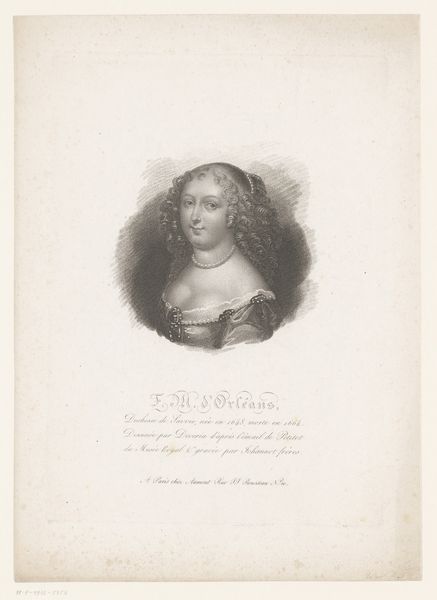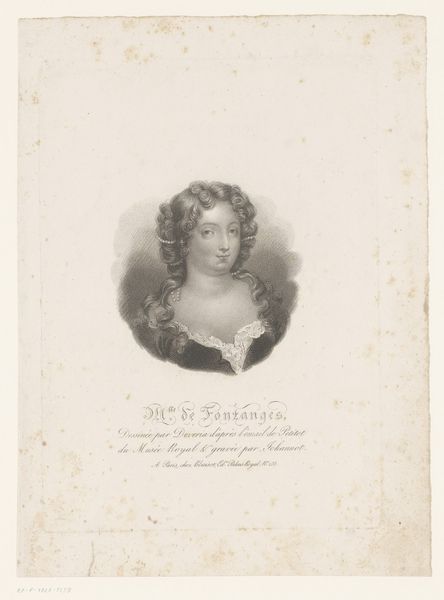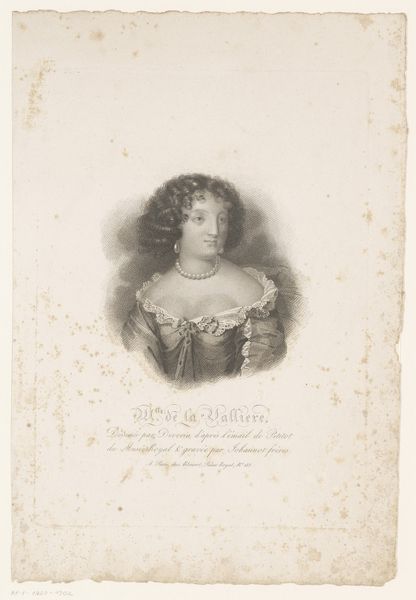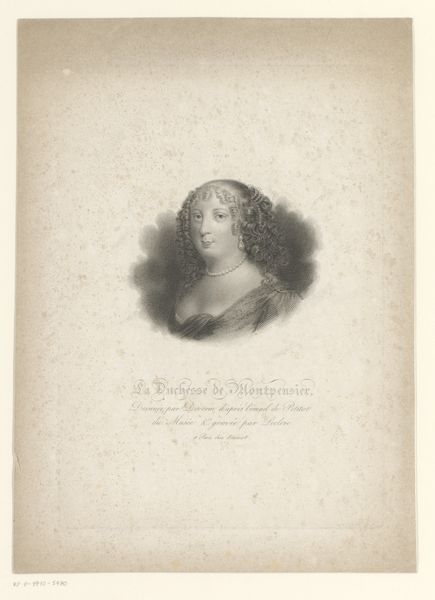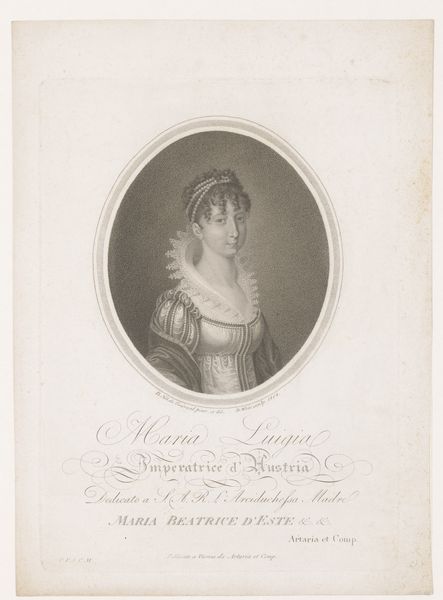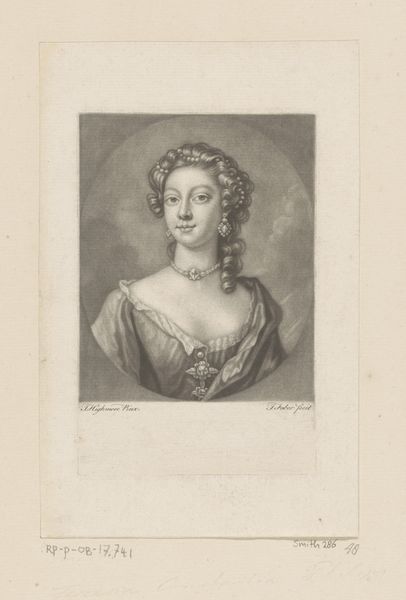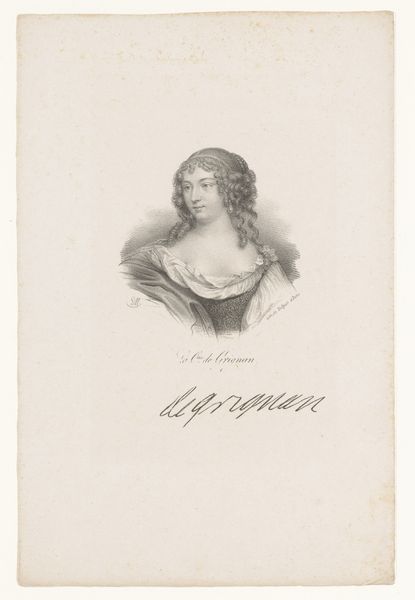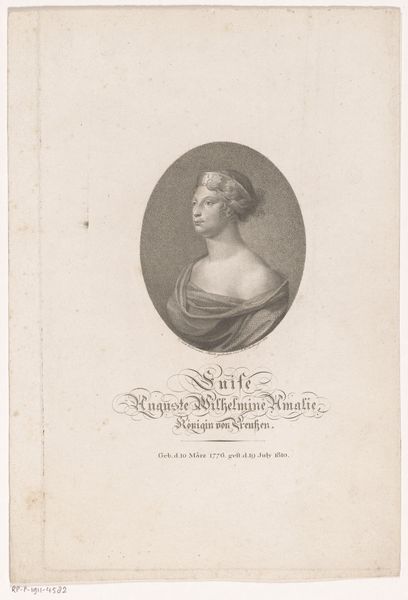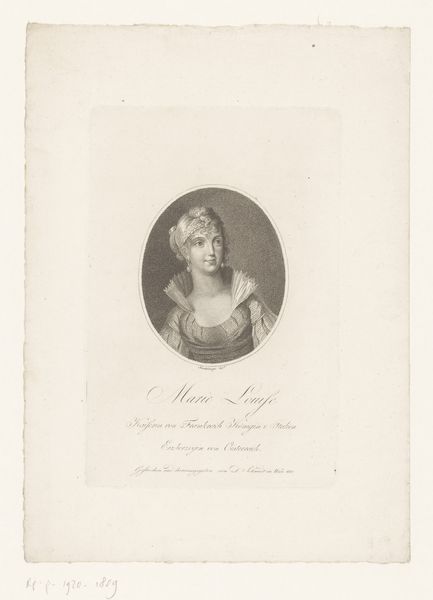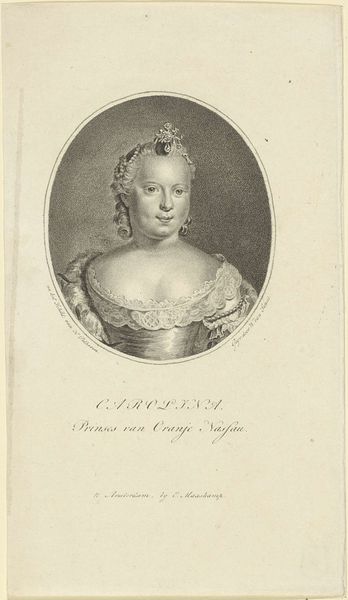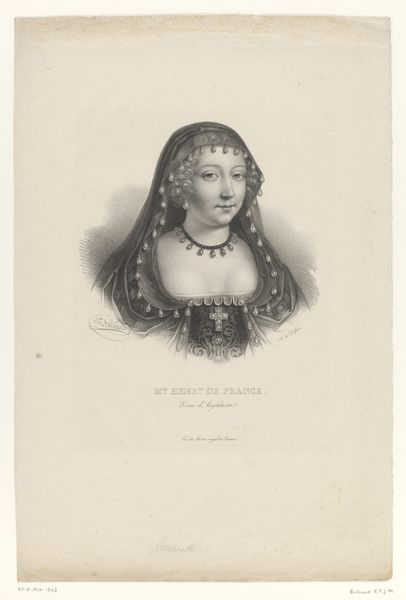
print, engraving
#
portrait
# print
#
old engraving style
#
pencil drawing
#
romanticism
#
engraving
Dimensions: height 236 mm, width 165 mm
Copyright: Rijks Museum: Open Domain
Editor: This is a print called "Portrait of Françoise de Sévigné," created in 1829 by Tony Johannot. It seems to be an engraving. There is something haunting about the starkness of the print. How do you interpret this work? Curator: Looking at this engraving, I'm drawn to the labor and processes involved in its making. Consider the physical effort and skill needed to transfer an image onto a metal plate, and then the mass production that prints allowed. Do you think that changes our understanding of the elite portrayed, Madame de Sévigné? Editor: That's interesting. I was focused on her image, the romantic hairstyle and dress... But you are right; prints made her likeness more accessible. Did that impact her social standing? Curator: Absolutely. Printmaking democratized imagery. Consider how prints were consumed, exchanged, and circulated. The materiality of this print – the paper, the ink – tells a story of expanding markets and new forms of visual culture. How do you think the context affects the romanticism of this portrait? Editor: I see what you mean. Thinking about the production shifts the focus from the individual to the broader culture. The romance becomes almost manufactured. Curator: Precisely. It’s not just about capturing individual beauty; it is also about reproducing and distributing it within a specific social and economic framework. Editor: I hadn't considered the print's material presence as contributing to that understanding. Thank you for widening my view. Curator: And thank you. Thinking about your observations on the mood has highlighted that even reproducible images have aura through materials.
Comments
No comments
Be the first to comment and join the conversation on the ultimate creative platform.
